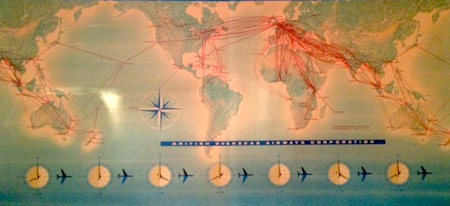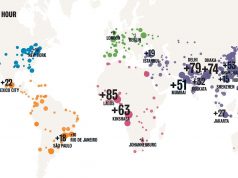meshcities.com works hard to tell the underlying stories of the people, places, and technologies behind the evolution of intelligent, livable cities. In spite of the fact our founder was advised by the late smart city pioneer Dr. William Mitchell of MIT, we find the term “smart city” to be so generic in its modern usage as to be the city branding equivalent of kleenex—everyone knows to ask for the thing, but they no longer identify it with a specific supplier or meaning.
For example, a google search of “smart cities” turns up some 1.4 million links. Not surprisingly, MIT is at the top. But the list quickly becomes murky. At one end of that massive repository of information can be found market research firms like Market and Markets. They offer this prediction for the smart cities market from 2012 to 2016:
The global smart city market is expected to cross $1 trillion by 2016, growing at a CAGR of 14.2%. The figure below segments the overall market by industry type.

Under their framed analytical gaze you will find the smart cities market defined by developments in a number of sectors. These include:
Smart Homes; Building Automation – Physical Security, Life Security,. Facilities Management; Energy Management – Smart Grid; Industrial Automation; Citizen Services – Healthcare, Education, Water; Smart Transportation – Traffic Management, Supervision, Passenger Information, Ticketing, Parking Management, Security – Urban Security, Critical Infrastructure Protection, ID Management, Cyber Security. Whew.
M&M concludes, not incorrectly:
Smart transportation, smart security and smart energy management are the most important components. As citizens and governments are becoming more environment conscious, there is a push for tougher regulations aimed at reducing carbon footprint, thus, driving the market. Time and resources management benefits achieved through smart technologies is another major advantage that smart cities have over traditional infrastructures.
In typical market analysis style, M&M strips away any cultural meaning in search of the numbers. Ah, business schools. As an informative side note market analysts said when Steve Jobs came back to Apple that the company was doomed. Turns out having ideas about design and culture makes markets instead of following them.
Anyway, at the other more citizen-focused end of the SC spectrum is a list of functions defined by and/or for the cyber culture fans at Mashables. Under the heading “25 Technologies Every Smart City Should Have” is this list (thanks to www.urenio.org for the summary):
- Parking apps
- Apps that let users “adopt” city property
- High-tech waste management systems
- All-digital and easy-to-use parking payment systems
- A city guide app
- Touch screens around the city
- Wi-Fi in subway stations and on trains
- Sustainable and energy efficient residential and commercial real estate
- Dynamic kiosks that display real-time information
- App or social media-based emergency alert and crisis response systems
- Police forces that use real-time data to monitor and prevent crime
- More public transit, high-speed trains, and bus rapid transit (BRT)
- OLED lights and surveillance in high-crime zones
- Charging stations, like the solar-powered
- Roofs covered with solar panels or gardens
- Bike-sharing programs
- A sharing economy, instead of a buying economy
- Smart climate control systems in homes and businesses
- Widespread use of traffic rerouting apps
- Water-recycling systems
- Crowd sourced urban planning
- Broadband Internet access for all citizens
- Mobile payments
- Ride-sharing programs
Notice the difference? This list focuses on how people use these remarkable, life-improving, technologies.
Of the two SC frames we know which one we lean towards. Our contributors believe people drive markets rather than markets driving people. Don’t call us naive. While the reality is that big government and big industry have the power to shape the marketplace and do, over time there is an arch towards making life better, more sustainable, equitable, etc., etc., etc.,
Our frame is somewhere in between the hard realities of business and the softer, cyber-cultural enthusiasm over anything new and cool.
We explore the ways people use embedded intelligence systems and modern problem-solving heuristics to change the way cities are made, for the better. Take a look at our past stories. In them you will find the ideas behind the technology. Find out how researchers are connecting the dots between brain research and the evolution of cities. See how governments can use new tools to learn from the public.
This is a broad framing of intelligent, anti-fragile cities we are proud to offer our readers.







